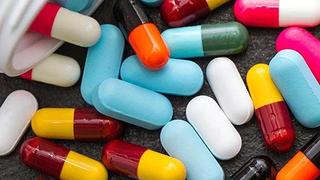
According to the analysis, India recorded the highest proportion of multidrug-resistant organisms among participating countries at 83%, compared to 31% in Italy, 20% in the USA and 10% in The Netherlands.
| Photo Credit: Representational Photo
An international study has revealed an alarming prevalence of antimicrobial resistance (AMR) among patients in India, raising concerns about the country’s preparedness to deal with infections that no longer respond to standard antibiotics.
Presenting the findings, AIG Hospitals chairman D. Nageshwar Reddy described the situation as one of the most dangerous public health threats and called for urgent regulatory and behavioural changes to prevent a return to a pre-antibiotic era.
The study, titled ‘Pre-procedural Screening of Multidrug-Resistant Organisms in Endoscopic Retrograde Cholangiopancreatography’, published in The Lancet’s eClinicalMedicine journal, was conducted across India, The Netherlands, Italy and the United States of America. It examined more than 1,200 patients undergoing ERCP procedures, using rectal and nasal swabs to determine the presence of harmful bacteria resistant to multiple antibiotics. According to the analysis, India recorded the highest proportion of multidrug-resistant organisms among participating countries at 83%, compared to 31% in Italy, 20% in the USA and 10% in The Netherlands.
Dr. Reddy explained that the human body normally hosts billions of bacteria, particularly in the nose, intestines and skin, many of which are harmless or even beneficial. The challenge arises when certain strains develop antibiotic resistance and transfer these resistance genes to other bacteria in the body. “This process turns the microbial ecosystem into a breeding ground for organisms capable of defying even the most powerful antibiotics,” he added.
The AIG team used advanced culture techniques and genetic analysis to identify bacteria such as Enterobacteriaceae and Pseudomonas, both classified as high-risk pathogens responsible for difficult-to-treat infections. The findings were cross-verified by laboratories in the Netherlands, Italy, the USA and the Czech Republic, given the unexpectedly high resistance levels detected in Indian samples.
One of the most striking observations emerged from patient interviews was that not a single Indian patient admitted to taking antibiotics. Dr. Reddy said this reflects two serious issues. First, patients may be unaware that they had consumed antibiotics because pharmacists routinely dispense them without prescriptions, often without informing customers. Second, resistant bacteria are entering the population through contaminated food sources such as milk, poultry, aquaculture products, agricultural produce and processed foods.
To address the crisis, Dr. Reddy proposed a ‘triad of action’ based on strict regulation, responsible prescribing and public education. He argued that urgent steps are required to halt over-the-counter sale of antibiotics, which continues despite regulatory restrictions under Schedule H and H1 of the Drugs and Cosmetics Rules. He suggested that India should consider shifting antibiotics to Schedule X, a category reserved for narcotics that requires stringent monitoring and enforcement.
Dr. Reddy warned that India could reach a point within five years where up to 95% of all organisms become resistant to available antibiotics, effectively pushing the country back to the pre-penicillin era.
Published – November 18, 2025 07:53 pm IST











Leave a Reply